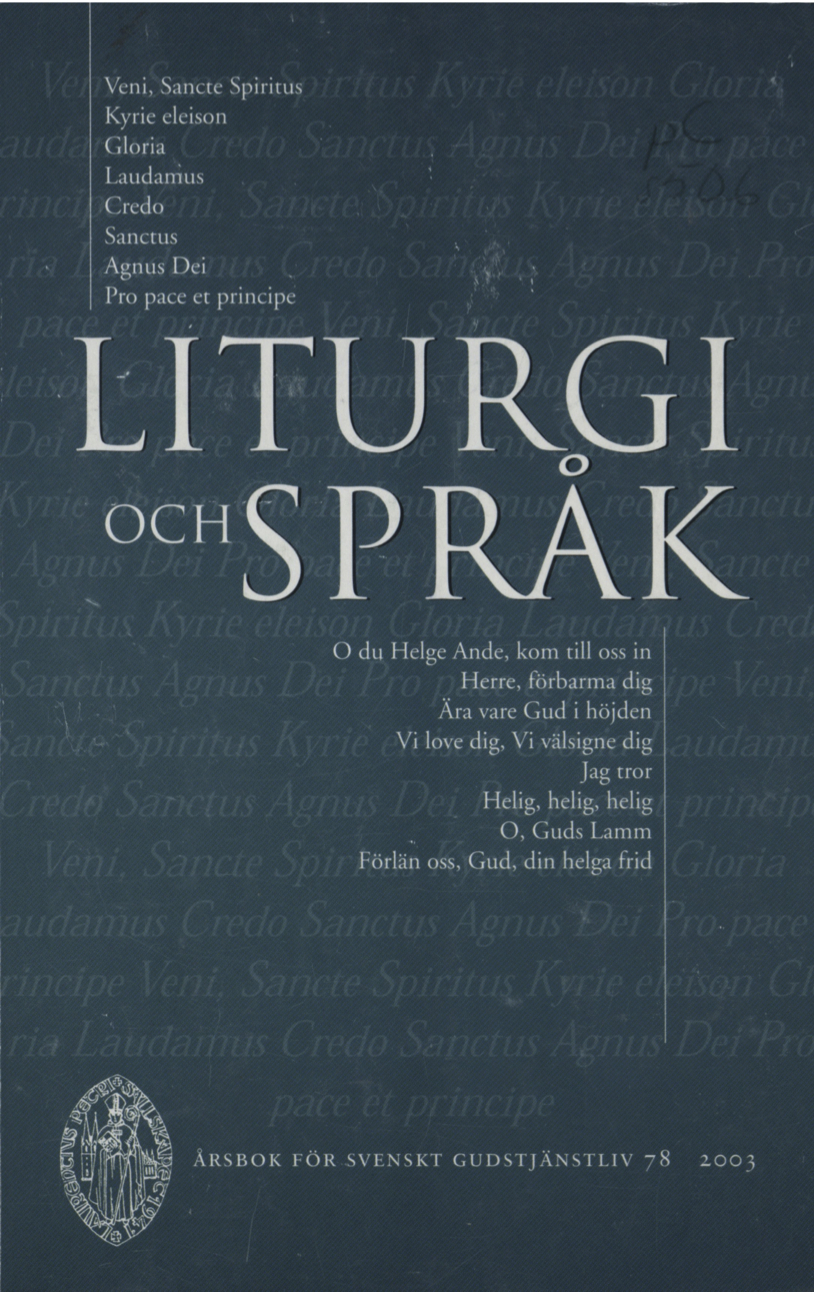Berättelse, liturgi, symbolspråk
Abstract
Narration is of central importance for our ethical and religious decisions. In Christian liturgy, the Biblical narrative of the Father giving his Son for our salvation takes a central place. The figurative language used in this narrative may come in conflict with convictions intimately associated with a person’s life narrative. Prayers directed to »our Father in heaven» seem to reflect an antiquated cosmology as well as an injurious gender model giving divine sanction to male supremacy. Should figurative speech in the liturgy be exchanged to conform better with modern people’s personal narratives? How far can this be effected without the Biblical narrative missing its point?
The church father Augustine (354-430) was »modern» enough to repudiate literal interpretations of »God in heaven» (the visible heaven being used figuratively for the invisible, spiritual reality) and sexist interpretations of God-language (God being elevated over humanity, and thus beyond gender). Augustine even suggests an alternative gender-neutral terminology for the Trinity, not wanting to replace the formula Father, Son, and Holy Spirit, but to avoid that it is given a literal humanly and masculine interpretation. The self-presentation for Mose as »I am» (Ex. 2,14) reveals God as the Original Existent, and the Source of every other existence (= the first link of the Trinity). God is also Word and Wisdom (= the second link), taking human shape in Christ (John 1,14, 1 Cor. 1,24). Finally, God is Love (1 John 4,8). In meditative language, Augustine can name God not only Wisdom and Love, but Truth, Goodness, Light, Life, and even Beauty.
In the Church of Sweden, a committee recently gave proposals for lessening the dominance of masculine God-language in the liturgy. Their main source of inspiration has been a book by Gail Ramshaw, God beyond Gender. This author strongly recommends increased use of gender-neutral symbols of the kind here exemplified. In fact, the liturgy from 1986 already contained a very good such innovation: an alternative Kyrie-text in which God is invoked as »eternally brilliant Morning Sun». No equally good text of this kind was proposed by the new committee.
Another innovation in the 1986 liturgy is a eucharistic prayer in which God is invoked »you who are as a father and mother for us». The motive for this was obviously to counteract a literal interpretation of male metaphors. Female metaphors for God were used by several medieval mystics, e.g. Julian of Norwich and Hildegard von Bingen. A popular Swedish hymn writer from the 19th century, Lina Sandell, used mother symbols in several hymns. Among Biblical references are Is. 66,13 and Luk. 13,34. Rather surprising, the new committee has proposed no further texts using female metaphors for God. Their main policy has been the rather negative one simply to reduce the use of male metaphors.
Both Ramshaw and the committe view male God-language exclusively from a perspective of power. Patriarchy and »the myth of the crown» are appointed the villains of the piece. Too little attention is given to the fact that old power symbols have been replaced by new ones. Kings lack political power, and the metaphor »Herren» (The Lord) gives no association to human lords, since the Swedish word »herrar» simply means »gentlemen». Tyrannical fathers still exist, but they cannot escape being morally blamed.
Above all, far too little attention has been paid to the fact that Jesus has radically changed the meaning of old power symbols. That which makes Jesus the Lord is that he has made himself everybody’s servant. The »myth of the crown» is turned upside down when he refuses to become a political Messiah and instead proclaims a spiritual Kingdom in which the patriarchal order of precedence is expressly overthrown.
There certainly are cases where male metaphors for God can be fruitfully replaced by other metaphors. The tendency in the proposed revision of the liturgy is however to keep the traditional metaphors Father and Lord mainly in prayers everybody knows by heart, as Our Father in heaven, Lord have mercy, and the Aronitic Blessing, but to reduce their use drastically in other contexts. However, only if the metaphors in the well-known prayers are clearly anchored and motivated in the basic Narrative can they remain meaningful expressions for a genuine piety. The eucharistic prayer and its preface are especially sensitive to radical changes. It should be expressly directed to the Father through the Son, but here the Father has vanished from the preface. The communion is a meeting with the risen Lord, but here Christ has been deprived of the God-metaphor The Lord. Who is he, then? Some kind of Superman? The formula »The peace of the Lord» is indispensable.
Downloads
Publicerad
Nummer
Sektion
Licens
© författarna, Laurentius Petri Sällskapet för svenskt gudstjänstliv samt Artos & Norma bokförlag. Det är tillåtet att kopiera och använda material ur Svenskt Gudstjänstliv för forskningsändamål om källan anges. För övriga ändamål kontakta respektive artikelförfattare samt förlaget. Särskilda restriktioner kan gälla för bildmaterial.


